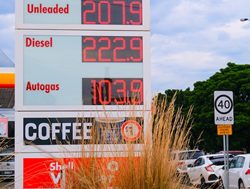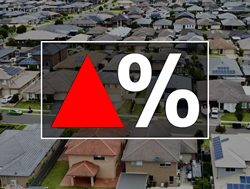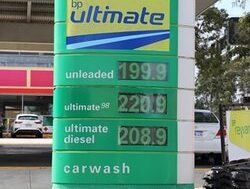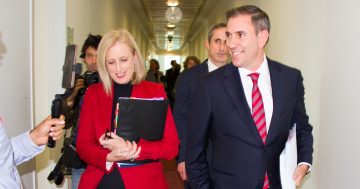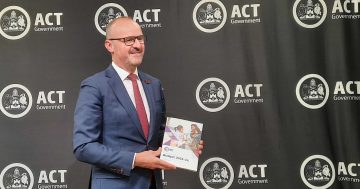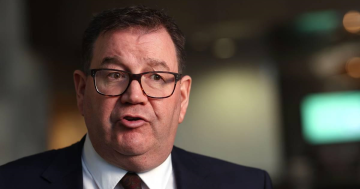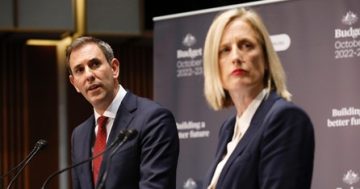Michelle Grattan* says cheaper petrol and cash handouts are all part of the Federal Government’s “vote-buying” budget.
 The Morrison government’s election budget halves petrol excise for six months and gives handouts to taxpayers, pensioners and welfare recipients in a cash splash aimed at clawing back votes.
The Morrison government’s election budget halves petrol excise for six months and gives handouts to taxpayers, pensioners and welfare recipients in a cash splash aimed at clawing back votes.
Treasurer Josh Frydenberg, who unveiled the giveaway budget in Parliament House on Tuesday night, has been able to juggle big spending with a reduced deficit thanks to high commodity prices and strong employment.
The budget’s centrepiece is aimed at families’ rising cost of living with a package Frydenberg described as “responsible and targeted, delivering cheaper fuel, cheaper medicines and putting more money in the pockets of millions of Australians”.
The excise on petrol and diesel is reduced immediately from 44.2 cents to 22.1 cents a litre, at a net cost to revenue of $2.9 billion.
But the government has given an assurance the revenue loss will not hit funding for roads, something some Nationals, including Deputy Prime Minister Barnaby Joyce, had been concerned about.
Frydenberg said a family with two cars who filled up once a week could save about $30 a week or $700 over the six months.
The Australian Competition and Consumer Commission, which monitors fuel prices, said in a statement it expected fuel retailers would pass on the cut “as soon as possible, as existing petrol stock levels are used up”.
Tackled on criticism by economists about a fuel excise cut, Frydenberg told a news conference during the budget lock-up: “Australian families will say it’s a good idea to pay less at the bowser”.
He added economists always had “a variety of opinions.”
More than ten million taxpayers will get a $420 top-up to the low-and middle-income tax offset (LMITO) after July 1.
This would mean a taxpayer getting the full LMITO will now receive up to $1500.
But the LMITO will not be renewed after that.
Six million pensioners and people on a range of welfare payments will get $250 within weeks.
On the health front, people will need fewer scripts to be eligible for free or further discounted medicines.
The budget’s deficit for 2022-23 is expected to be $78 billion, 3.4 per cent of GDP. In the December budget update it was expected to be nearly $99 billion.
The cumulative deficit over the forward estimates is forecast to be $224.7 billion.
Frydenberg said net debt as a proportion of the economy was forecast to peak at 33.1 per cent of GDP at June 30, 2026.
The budget forecasts unemployment will fall from its present 4 per cent to 3.75 per cent in the September quarter. Economic growth is forecast at 3.5 per cent next financial year.
Inflation is set to climb to 4.25 per cent by June and then to fall back to 3 per cent in 2022-23, when wages are forecast to rise by 3.25 per cent.
The budget includes more than $2 billion in measures for women, including $1.3 billion on women’s safety.
Eligibility for paid parental leave will be expanded and for the first time, single parents will be able to access the full 20 weeks’ leave.
With the government highlighting national security in its election campaigning and strong concern about China’s increasingly aggressive stance, the budget commits to a ten- year $9.9 billion investment in offensive and defensive cyber capabilities.
Defence Minister Peter Dutton said: “Project REDSPICE – Resilience, Effects, Defence, Space, Intelligence, Cyber, and Enablers – is the largest ever investment in the capabilities” of the Australian Signals Directorate.
This recognised “the deteriorating strategic circumstances in our region, characterised by rapid military expansion, growing coercive behaviour and increased cyber attacks”.
As another round of flooding hits Northern NSW and Queensland, the budget says the government has already allocated $3.6 billion to households, businesses and communities to deal with the earlier devastation.
In total, it expected to spend more than $6 billion on flood relief and recovery.
UPDATE
Shadow treasurer Jim Chalmers told the ABC that on petrol prices the government was “taking a challenge from one side of the election and pushing it to the other side of the election”.
“Clearly we’re not going to stand in the way of delivering relief for working families whose real wages are falling,” Chalmers said.
But he made it clear Labor would not undertake to keep the excise cut beyond its planned expiry date.
He said it would be very hard for a government of either political persuasion to be able to maintain the excise cut after September.
“There’ll be some cost of living relief in the interim but there’ll be a difficult period when the price of fuel goes back up.”
Major cuts
- $3 billion in the next 6 months to cut the fuel excise from 44.2 to 22.1 cents per litre, from tomorrow (March 30).
- $1.5 billion this year for a $250 one-off, tax-exempt cost-of-living payment in April for pensioners and concession card holders.
- $4.1 billion over the next 2 years to extend and increase the low and middle-income tax offset (LMITO) for this tax year – up to $1,500 for individuals and $3,000 for couples.
- $1.1 billion for a women’s safety package over the next 4 years, including programs to help women suffering family, domestic or sexual violence, an early intervention campaign aimed at boys and young men, and national counselling services.
- $2.4 billion over the next 5 years to add new Pharmaceutical Benefit Scheme items, including drugs targeting various cancers, cystic fibrosis, COVID treatments and other chronic or terminal illnesses, and a further $525.3 million to reduce the PBS safety net threshold from July 1 2022.
- $9.9 billion ($589 million in the next four years) to double the size of the Australian Signals Directorate and increase cyber defence and attack capabilities within the next 10 years.
- $2.4 billion in total by the end of June to provide RATs to concession card holders, GPs, Aboriginal Community Health centres, and remote communities.
- $468.3 million over the next 5 years to implement recommendations from the Royal Commission into Aged Care Quality and Safety.
New spending
- $2.7 billion in savings from unused fuel credits thanks to the 6 month cut to the excise.
- $2.1 billion in additional receipts over the next 4 years expected from tax caught by ATO’s Tax Avoidance Taskforce.
- $115 million saved over the next 4 years in by reallocating 10,000 partner visas to the skilled visa stream from July 1 2022.
- $150 million in savings from the consolidated Paid Parental Leave scheme (which will fund the extension of the program to a shared 20 weeks for both partners).
*Michelle Grattan, Professorial Fellow, University of Canberra.
This article first appeared at theconversation.com.


